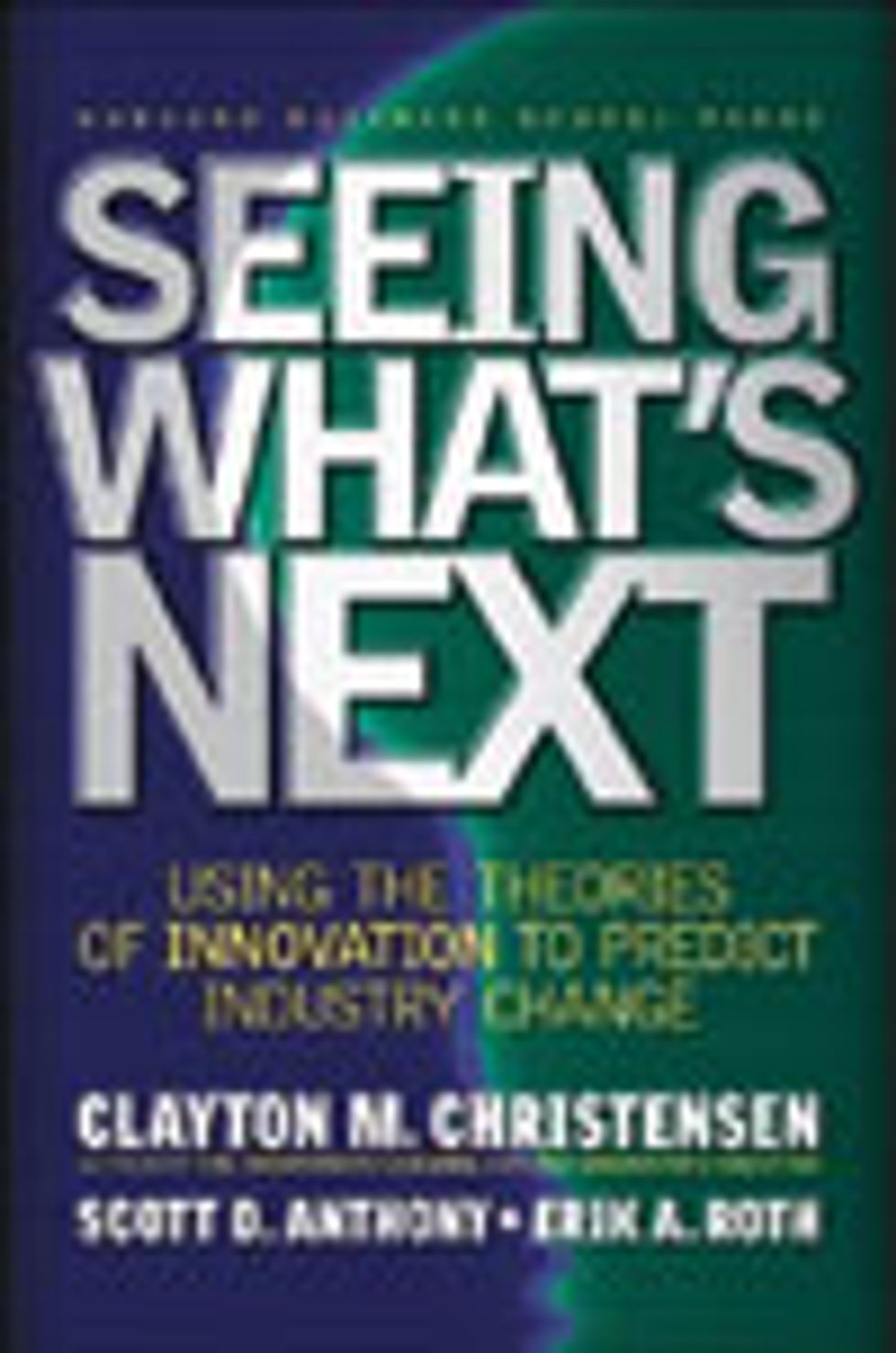Seeing What's Next
By Clayton M. Christensen, Scott D. Anthony and Erik A. Roth; Harvard Business School Press Boston, 2004, 312 pp., $30; ISBN: 1-5913-9185-7
When Clayton M. Christensen published The Innovator's Dilemma in 1997, the title added an important new conceptual catchphrase to the lexicon of technology management. Innovative companies in any technology-based industry, Christensen explained, must balance the need to perfect the products that made them successful and at the same time watch for the next great new technology. The dilemma Christensen identified is that companies become so enamored of their past innovations that they are unable or unwilling to adapt to new technologies that offer dramatically different levels of performance and price.
Now Christensen has teamed with two of his former MBA students--Scott Anthony and Erik Roth--to write Seeing What's Next, which promises to guide readers in the art of predicting industry change so that they can avoid falling victim to the innovator's dilemma.
This latest book is in many ways easier to read than the original landmark volume or its 2003 sequel,The Innovator's Solution. The first book examined in excruciating detail the workings of the disk drive business--an esoteric technology practiced by companies whose names are unfamiliar to most. Now, the telecommunications business is the primary case study, making the examples in this new book much more meaningful, since the technologies are better understood and the names of the companies familiar to most.
Western Union leads off in the study as the quintessential victim of the innovator's dilemma. In the 1870s, the company passed up an opportunity to buy the patents for the telephone, because it could not envision any market demand.
The decisions of Western Union management, Christensen points out, were perfectly logical given their view of the market and technology. They were focused on long-distance communications, and the early telephones worked only over short distances.
What they overlooked, he notes, was the disruptive nature of the new telephone technology. It met the needs of a different market--people who wanted to send a message across town instead of across the country. Because these people didn't consume telegraph services at all, they were of no concern to Western Union. But as other companies developed the telephone, it soon eclipsed the telegraph.
The Western Union lesson illustrates one of three situations that Christensen warns readers to watch for if they are to "see what's next" and be open to future breakthrough possibilities. In addition to nonconsumers, the second group to watch for is what he calls "undershot consumers," who use the existing products but are frustrated by their limitations and willing to pay for enhancements. Examples here are those who were willing to pay extra for mobile cellphones in a later era.
At the other extreme are "overshot consumers," who, he notes, are more than satisfied with current products and are unwilling to pay for further improvements. As an example, Christensen sites MCI's ability to sell streamlined long-distance communications services at a discount to businesses, undercutting AT&T's full-service long-distance offerings.
The lessons are important ones for all engineers and technology professionals. To be successful, engineers and technologists must design devices and processes that perform efficiently and reliably. This naturally causes them to favor familiar and proven technologies. But unless they are vigilant, they risk getting stuck in a rut and being bypassed by bolder, new competitors.
Christensen believes these lessons also apply to any industry impacted by technology. Seeing What's Next includes brief examinations of the effect of Internet-based distance learning on higher education and the repercussions of new medical procedures and tests on the delivery of health care.
But, although this book is recommended reading for anyone involved with technology, there is one note of caution. Unfortunately, Christensen is succumbing to his own innovator's dilemma. This is his third book on the theory of innovation. While he's improved his ability to explain his concepts, readers of either of the previous two books will find little new substance in this one.
